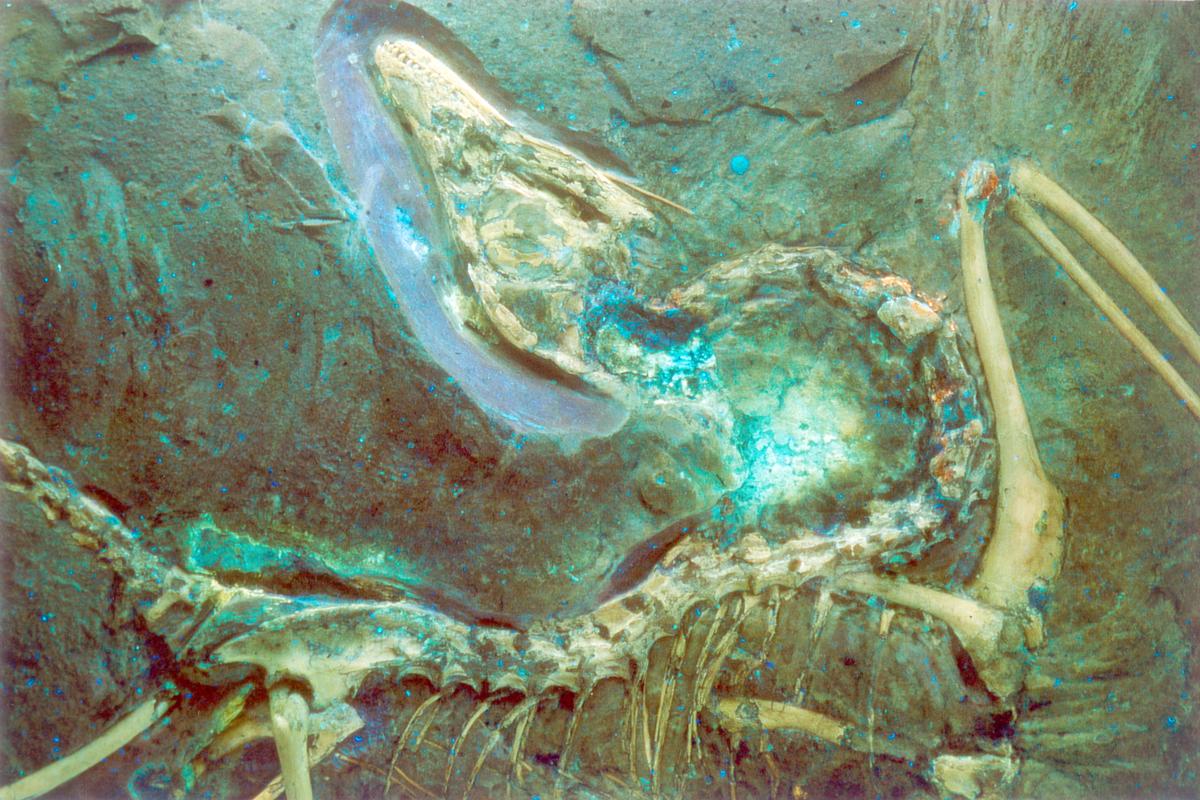In a new study, recently published in Scientific Reports, an international research team under lead management of the Museum für Naturkunde Berlin provided new evidence for the capability of Archaeopteryx for active, flapping flight. The Urvogel was a lightweight with fortified back.
The Berlin specimen of the small feathered predatory dinosaur Archaeopteryx is among the best preserved and most beautiful fossils of the 13 known specimens. Ever since the specimen’s initial description in 1881, this fossil, also one of the most famous display items in the Museum für Naturkunde Berlin, is in the center of many research questions around its paleobiology and systematics. One of the central unanswered questions is, whether Archaeopteryx used its rich plumage for active flapping flight, or only passive gliding over the Solnhofen lagoonal landscape. In a new study published in Scientific Reports, an international team of researchers under lead management of scientists from the MfN was able to bring forward new evidence for the ability of Archaeopteryx for active wing flapping. The team has analyzed high-resolution longwave UV light photographs, which exposed two key aspects in the skeleton of Archaeopteryx that would have had positive impacts on its flight capabilities. “The UV images made by our co-author Helmut Tischlinger are of excellent resolution and reveal so many details of the structure of these little bones, that we would never be able to see under visible light or microscope.” states Daniela Schwarz, curator of the Archaeopteryx fossil at the MfN and lead author of the study.
The UV images reveal that most of the vertebral column of Archaeopteryx was strongly hollowed out by pneumatic cavities, which are extensions of large air sacs positioned around the lungs, similar to living birds. Martin Kundrát (Center for Interdisciplinary Biosciences, UPJS in Kosice, Slovakia), one of the authors of the study, summarizes: “This allows us to demonstrate that Archaeopteryx had a rather lightweight skeleton, much lighter than previously reported, and possessed a bird-like, air-sac driven respiratory system for a high-performance metabolism.”. But the UV images revealed even more anatomical novelties. “Apparently some of the vertebral neural spines in the back of Archaeopteryx were bridged by rod-like ossifications that connected the vertebrae with each other. Thereby, a part of the vertebral column was additionally stabilized”, Daniela Schwarz points out. These structures mark the beginning formation of a notarium, a structure present in many living birds and consisting of a number of fused dorsal vertebrae, aiding the animals in stabilizing the back during flapping flight. Such an additional reinforcement of the vertebral column, combined with the extensively hollowed out vertebrae for weight reduction, and the presence of air-sacs in the respiratory system, are new hints towards the ability of Archaeopteryx to actively flap its wings, for cursorial locomotion and/or for flying high into the air.
Published in: www.nature.com/articles/s41598-019-42823-5
